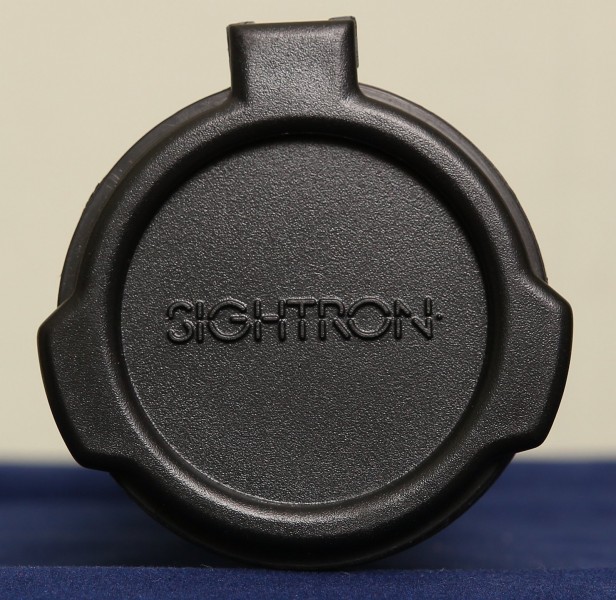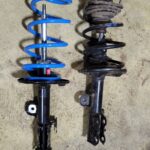Sightron isn’t a particularly famous brand. I don’t think I’ve ever seen one of their ads in a magazine, tradeshow, etc. And although they’ve been around for 18 years, their brand is much less known than Vortex, a relative newcomer. Sightron’s SIII series is made in Japan, and they come with some interesting features. This particular model, their first First Focal Plane (FFP) SIII, came out in 2013. This particular model is the Sightron SIII 6-24×50 FFP LRMOA.
Before we get too far, we should try to claim where this scope fits into the world in terms of category. I’d describe the Sightron SIII 6-24×50 FFP as a mid-range ($1000-ish) target scope, particularly well suited for shooting at long range and changing ranges. If you always shoot at one distance, the non-FFP version is a bit cheaper and offers a bit more elevation range (100 total MOA vs 80 MOA.) For myself, I opted for the MOA version over the Mil version. I’ve had Mil scopes in the past and although I like metric, I just found MOA handier. This scope competes directly with Vortex Viper 6-24×50 on the lower cost end, Nightforce SHV, Zeiss, IOR, and Leupold Mark 4 at the mid-tier, and does not really compete with the Vortex Razor HD Gen II’s, Nightforce NXS’s, US Optics, S&B PMII and others at much higher costs.
What’s in the Box!!!?
Along with the scope, which comes bubble wrapped in a fabric bag:
- Manual
- Lens cloth
- Sunshade
- Flip caps
- Torx wrench for adjusting zero on turrets
Reticle
While there’s a ton of reticle choices in the non-FFP SIII lineup, within FFP there’s only the choice between their long range MOA and long range Mil reticles. While some FFP reticles get too obnoxiously big when zoomed right in, blocking much of the target, the Sightron LRFFP-MOA reticle is really nice. The small central target dot (1/4 MOA dot) fit well within the black dots on the 5 spot I was shooting at 100 yards, and the hash marks are visible but don’t block much.
Usability
If you’re used to adjustments on lower priced scopes, prepare for pure bliss. Clicks are extremely tactile, adjustments are free of lash, and when you dial in windage or elevation, bullet impacts move exactly. Sightron SIII’s are known for their accurate tracking, and are well loved as an inexpensive (relatively!) target scope for primarily this reason. The Sightron SIII FFP scopes come with larger exposed turrets rather than the tall, covered target turrets. The eyepiece is rotated to adjust for focus and side parallax is on the side and is not marked for distance. You don’t really need the distance marked, as it’s very easy to see when you’re dialed in at 24X.
Optics
Shooting through this scope is very easy. The eyebox, even at 24X is very easy to get into and doesn’t move at all between 6 and 24X. The clear glass and high magnification made for easy target shooting and spotting for other friends who shoot with me. Sightron claims a 7 layer coating on the lenses. If I’m bringing this scope, I don’t bother packing a spotting scope.
Cons
There are several features that the turrets lack that other high end scopes have. There’s no zero stop on elevation. You need a tool to reset zero. There is no turret lock. Windage would be better if it counted up in both directions so there’d be less math involved for small windage adjustments.
Durability on this scope is expected to be worse than heavier duty scopes. At 24 ounces, it shouldn’t be expected to take as much abuse as a 32oz Nightforce NXS, 40oz US Optics, or 48.5oz Razor HDII. Although this rifle offers some tactical options, it is not built as a military-proof optic. The low weight does make the Sightron a better choice for long range competitions where total rifle weight is limited, such as F Class.
Vortex Viper PST 6-24×50 FFP vs Sightron SIII 6-24×50 FFP
These were the 2 scopes I was looking at and comparing, so I have some notes handy on the two. Weight and length is pretty much the same in both scopes, they both offered FFP, they’ve both got great warranties.
Wins for the Vortex: Zero stop elevation, illuminated reticle, cheaper, better customer service?
Wins for the Sightron: Max elevation adjustment of 80 MOA vs 65 in the Viper.
Funny story about the elevation: I met someone at the range who had a very similar stock/action setup to what I had, but was running the Vortex PST 6-24 FFP. He had a 20 MOA base and had combined it with inserts for his Burris Signature rings to get another 10 MOA, and his scope bottomed out before he could get to zero at 100. He ended up having to take out the inserts and run with just the 20 MOA base. The 65 MOA on the Viper amounts to 32.5 up and 32.5 down, and that gives less breathing room if you want to shoot really long (you need about 38 MOA of up to go 1000 yards with a 308) or if you want to be able to use a really canted base and still be on target at 100 yards.

























